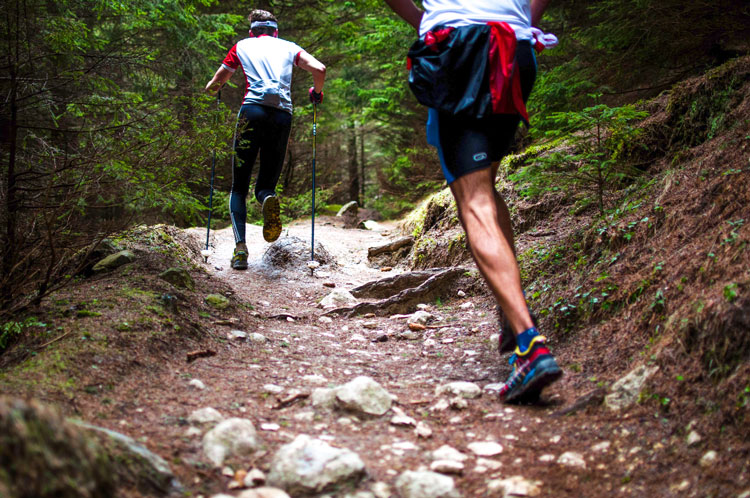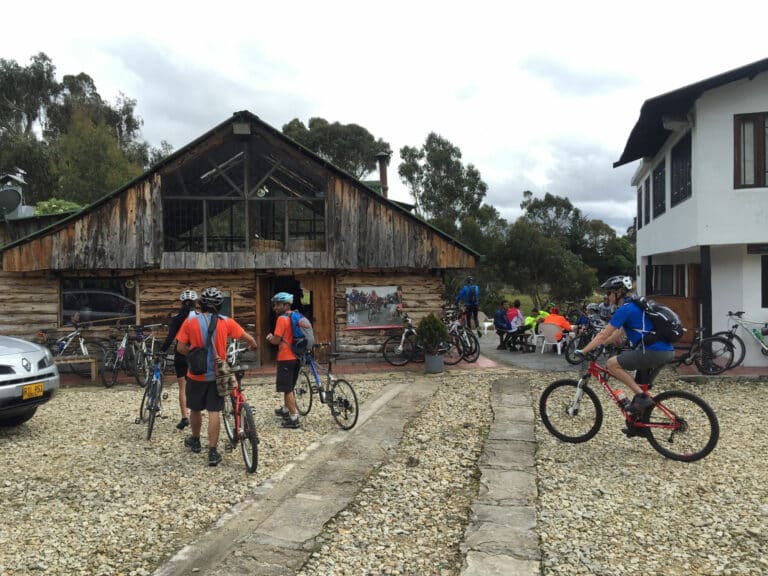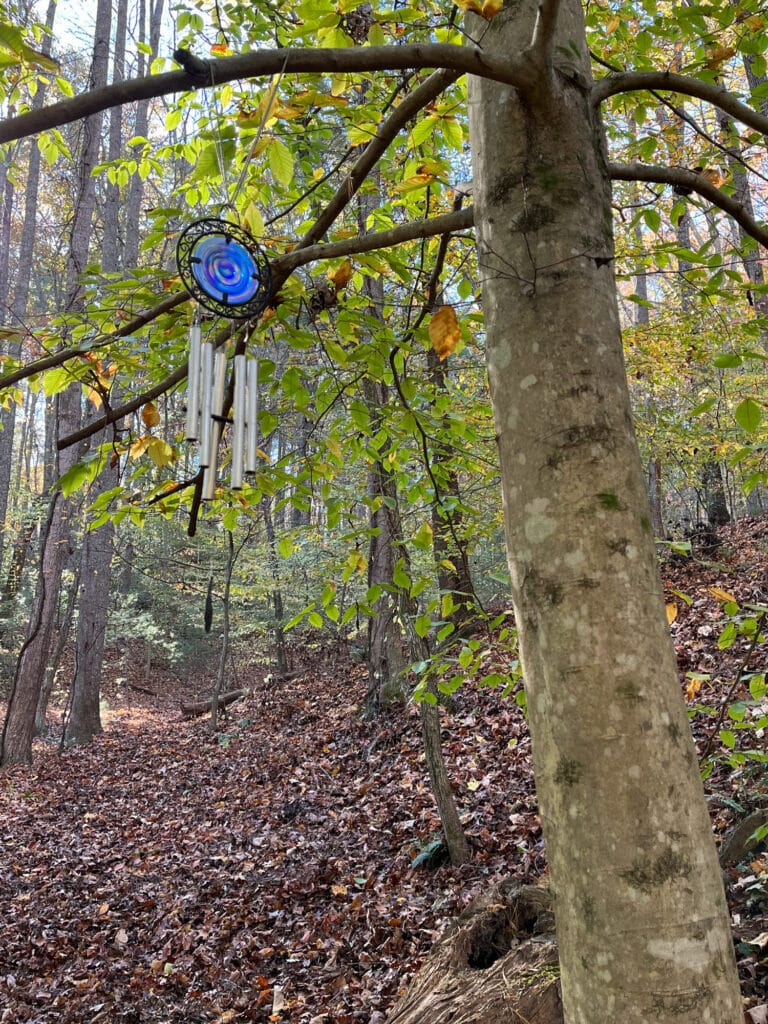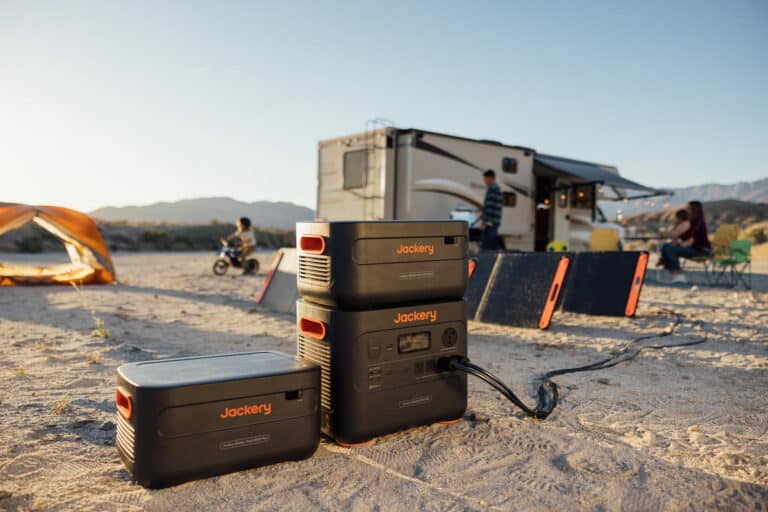Meet the RidgeRunners—guardians of the Appalachian Trail
Hiking season has finally arrived, and Ridgerunners are already out along the Appalachian Trail. Those chosen for the seasonal position hike and camp along sections of trails, speaking with hundreds of visitors about the importance of maintaining the trail and minimizing human impact.
From Georgia to Maine, there are about 50 Ridgerunners employed by the Appalachian Trail Conservancy, local trail clubs, or agency partners. The season varies depending on location but generally runs sometime between March and October.
BRO spoke with several experienced Ridgerunners about what drove them to this job and how hikers can minimize their impact on the trail.
The Thru-Hiker
“I actually began my love of the Appalachian Trail back when I was a teenager,” Lauralee Bliss said. “My family would go down to Shenandoah National Park and I had a ranger tell me about this trail that ran from Georgia to Maine. I said, ‘I want to do that one day.’”
Bliss completed a northbound thru-hike in 2007 with her son, who was 16 at the time. Then from 2008 to 2011, she worked on completing a solo southbound section hike.
“Hiking the trail, meeting the wonderful people, and seeing the trail for myself, I really wanted to do something with that,” Bliss said. “I wanted to give back.”
That’s when she decided to apply for the Ridgerunner program. Bliss started in Maryland her first year, covering all 41 miles in the state, before working in Shenandoah for five seasons.
Depending on how far from home she was, Bliss either worked five days on and two days off or 10 days on and four days off. When she wasn’t on the trail, she was back home cleaning her gear, figuring out her food, and preparing to go back out on the trail.
“Ridgerunners get paid for eight hours but they’re out for 24 hours,” Bliss said. “During the day, you’re out patrolling on the trail and being that info person for hikers. And then at night, you’re at the shelter. You’re sharing about Leave No Trace and you’re doing some cleanup. A lot of people think I’m getting paid to hike the trail. That’s not true at all. You’re not out there to hike, you’re there to help.”
For others interested in the program, Bliss recommended lots of hiking experience and familiarity handling a variety of situations, from bad weather to knowledge of the side trails in the area. However, she cautioned that the ridgerunning program isn’t for every hiker.
“You have to be assertive,” she said. “You need to be an advocate. You don’t want to be sitting there as a ridgerunner, saying nothing, as you’re seeing somebody polluting a stream. You don’t want to yell at them, but you want to do it as an authoritative resource. We’re not out there to be mean, we’re not out there to be the law. We want to help you, we want to help the trail, and we want everyone to enjoy it together.”
The Trail Maintainer
For years, Dave Youmans has been involved with trail maintenance in some form or another. He has worked as a volunteer maintainer of the Andy Layne Trail for several years and as a crew leader for the ATC’s Konnarock Volunteer Trail Crew.
In April, he started his third season as the Ridgerunner for the Catawba Mountain section of the trail, encompassing the Virginia Triple Crown.
“Ridgerunners patrols this section precisely because of the sheer volume of hikers,” Youmans said. “Being a resident, and already a volunteer maintainer, the opportunity to educate hikers here around Roanoke was exciting, as well as a natural fit.”
Youmans received Wilderness First Responder training and attained a Master Educator certification in the Leave No Trace principles before the season started.
“Most days are spent hiking in all weather conditions, speaking to, in some cases a hundred people or more,” he said. “Obviously, I’m not speaking to every soul on the section that day, but I greet the vast majority.”
In all of those interactions, Youmans said there is some confusion from other hikers as to what his role is on the trail.
“One major misconception is that we are somehow law enforcement,” he said. “My primary job is to teach people how to enjoy the trail while realizing the cumulative effect/damage caused by large numbers of users. My dream is that folks, more often than not, take the simple steps that reduce the negative human impact on our valuable public resource. The so-called rules were only put into effect as a desperate attempt to curb some of the more unfortunate effects of overuse.”
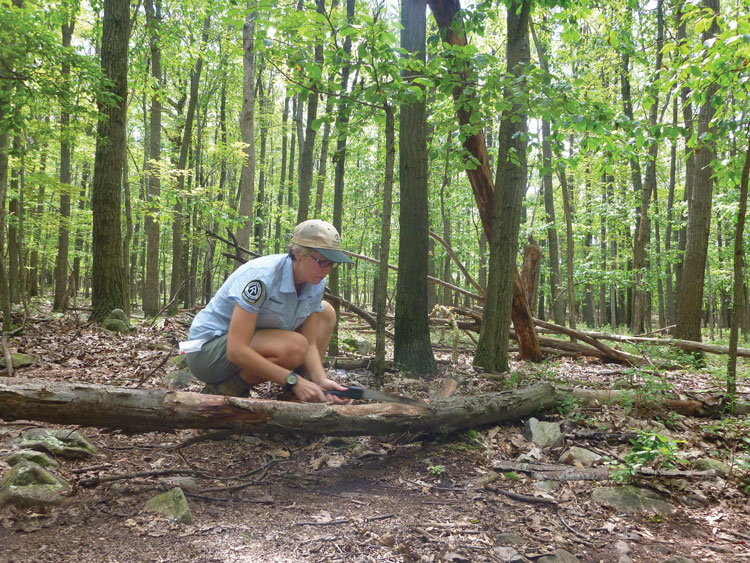
More than Miles
When Sara Leibold found out she would be a Ridgerunner for the “rollercoaster” section of the A.T. from the end of Shenandoah National Park to Harpers Ferry, W.Va., she didn’t remember that section being all that difficult from her 2011 thru hike.
But concentrating on that one section, she noticed the up and down, up and down.
“When you thru hike, you’re just making miles,” she said. “You kind of take it for granted how nice it is and how clear it is because of all the volunteers and maintainers do. When I was a Ridgerunner, I could really see the impact and appreciate a lot more than when I was just hustling right through an area.”
After her first run, Leibold knew what to expect each day and spent her time documenting areas that needed maintenance or problematic campsites.
“I felt really confined to my area at times. But also I was able to really learn that area. So, I had favorite spots that I would get to every day and look forward to.”
“A lot of times you’ll find piles of crap near the trail,” she said. “People will leave their toilet paper. That’s not okay. Then I’m having to bury someone else’s crap and pack out their toilet paper.”
Maury Hudson, who just started her third season as a Ridgerunner in Great Smoky Mountains National Park, said being able to properly take care of trash and waste is one of the biggest ways a hiker can help the trail.
“Now that I have a trowel, have used a trowel, and have buried left behind poop from a lot of other people, I know that it makes a major difference. It’s an easy thing that everyone should have. We’re not out there to be trash collectors.”
